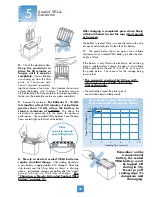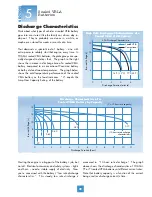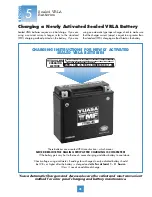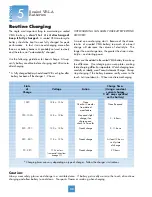
Volt Efficiency
The ratio of the
average voltage of a cell or battery
during discharge to the average volt-
age during subsequent recharge.
Voltage
The difference in electrical
potential that exists between the ter-
minals of a cell or battery or any two
points of an electrical circuit.
Voltage Range
The difference
between maximum and minimum cell
voltages within a battery or string of
cells when all cells are charging and
discharging.
Voltmeter
An instrument for mea-
suring voltage.
VRLA (Valve Regulated Lead
Acid)
Sealed batteries which fea-
ture a safety valve venting system
designed to release excessive internal
pressure, while maintaining sufficient
pressure for recombination of oxygen
and hydrogen into water.
Watering
Adding water to battery
electrolyte to replace loss from elec-
trolysis and evaporation.
Watt
A unit of electric power, equal
to a current of one ampere under
one volt of pressure.
Watthour
A unit of electrical ener-
gy or work, equal to one watt acting
for one hour.
Watthour Capacity
The num-
ber of watthours a storage battery
can deliver under specific conditions
of temperature, rate of discharge
and final voltage.
Watthour Efficiency
A storage
battery’s energy efficiency expressed
as ratio of watthour output to the
watthours of the recharge.
Watthour Meter
An electric
motor that measures and registers
electrical energy in watthours.
Wet Shelf Life
The time a wet sec-
ondary cell can be stored before its
capacity falls to the point that the cell
cannot be easily recharged.
40
GLOSSARY
Summary of Contents for SmartShot Automatic 12V 1.5 Amp 5 Stage
Page 1: ......



































